Subtotal: $ 74.4
2G / 3G / 4G / 5G
EC200U Mini Development board Supporting LTE 4G / GSM GPRS / GPS / Bluetooth / Wi-Fi Scan / Audio, Europe band compatible
- LTE Cat 1 module optimized for M2M and IoT applications
- Worldwide LTE, GSM/GPRS coverage
- Abundant functional interfaces
- Support analog audio
- Built-in GNSS (optional)
- Feature refinements: support Wi-Fi Scan (optional), Bluetooth (optional) and FOTA
- High performance
$ 19.9
CompareBasic Overview
The Development Board is a versatile and feature-rich development platform, making it an excellent choice for working with the EC200 module. It is designed to facilitate IoT prototyping and supports various applications, including smart home solutions, thanks to its integrated connectivity options and modular design.
Feature List
- Main UART Port: Used for AT commands and data transmission.
- Debug UART Port: Used for debugging and logging only, not a general-purpose UART
- AT Commands: Compliant with 3GPP TS 27.007 and 27.005, including new GM AT commands
- Network Indicator: NET_STATUS pin indicates network status
- GNSS interface (ANT_GNSS)
- Normal operating temperature: 35°C to +75°C
- USB 2.0 high-speed interface
- USIM/SIM card interface (supports 3V and 1.8V)
- ADC interface
- UART interface
- I2C interface
- USB_BOOT interface
Development Board Configuration
The detailed assignment of the peripheral interfaces on the Development board is as follows:
| NO. | Name | Silkscreen | Comment |
| 1 | Simcard1 case | SIM1 | 4FF SIM Card 12.3* 8mm |
| 2 | Simcard2 case | SIM2 | MFF2 SIM Card |
| 3 | USB TYPE-C | USB1 | USB interface which can be used for debugging and upgrading firmware |
| 4 | USB VBUS | U VBUS/VBUS | USB insertion detection |
| 5 | Pin header 13 pin | – | header 2.54mm |
| 6 | External WIFI/Bluetooth Antenna | BT/WIFI | UFL ANTENNA |
| 7 | External GNSS Antenna | GNSS ANT | UFL ANTENNA |
| 8 | External GSM Antenna | MAIN ANT | UFL ANTENNA |
The Development board has 4 functional indication LEDs, as follows:
- D1: Indicate module’s operating status LED
- D2: Indicate the module’s network registration mode LED
- D3: Indicate the module’s network activity status indication LED
- D4: Indicate Power LED
Development Board Interfaces
The main pin placement of the Development board is shown in the following figure:
- Development board pin header
| NO. | Name | Silkscreen | Comment | Interface |
| P1-1 | LOUDSPK_N | SP- | Microphone analog input (-) | Analog |
| P1-2 | LOUDSPK_P | SP+ | Loudspeaker differential output(+) | Audio |
| P1-3 | MIC_N | MIC- | Microphone analog input (-) | Analog |
| P1-4 | MIC_P | MIC+ | Microphone analog input (+) | Audio |
| P1-5 | USB_BOOT | USB | The USB_BOOT cannot be pulled up before startup and it can be used as KEYIN0 after startup. | |
| P1-6 | RESET_N | RST | Reset the module | |
| P1-7 | PWRKEY | PWR | Turn on/off the module | |
| P1-8 | ADC0 | ADC | General-purpose ADC interface | |
| P1-9 | SDIO1_DATA | DATA | SDIO data bit 0 | |
| P1-10 | SDIO1_CLK | CLK | SDIO clock | SD Card |
| P1-11 | SDIO1_CMD | CMD | SDIO command | |
| P1-12 | SDIO1_VDD | VDD | SDIO power supply | |
| P1-13 | GND | Ground | ||
| P2-1 | DEBUG_RXD | DBG RX | DEBUG Serial port receiving | Debug |
| P2-2 | DEBUG TXD | DBG TX | DEBUG Serial port sending | UART |
| P2-3 | MAIN TX | TX | The module sends data. Used for AT commands. | Main |
| P2-4 | MAIN RX | RX | The module receives data. Used for AT commands. | UART |
| P2-5 | SPI_CS | CS | SPI chip select | |
| P2-6 | SPI_MOSI | DOUT | SPI master mode output | SPI |
| P2-7 | SPI_MISO | DIN | SPI master mode input | |
| P2-8 | SPI_CLK | CLK | SPI clock | |
| P2-9 | I2C_SCL | SCL | I2C serial clock | I2C |
| P2-10 | I2C_SDA | SDA | I2C serial data | |
| P2-11 | GND | Ground | ||
| P2-12 | Power +5 | +5 | ||
| P2-13 | Power +5 | +5 |
Hint: make sure the power supply voltage is stable.
Downloads
- EC200U20Windowse20Driver
- Quectel_EC200U_Series_Hardware_Design_V1_0_0_Preliminary_20210406
- Quectel_EC200U_Series_LTE_Standard_Specification_V1.1
- Quectel_EC200UEG915U_Series_AT_Commands_Manual_V1.0
- Quectel_ECx00UEGx00U_Series_GNSS_Application_Note_V1.0
- Quectel_ECx00UEGx00U_Series_GNSS_Application_Note_V1.0-1

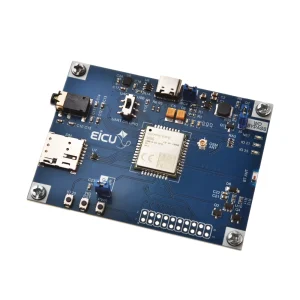 M66 Development Board
M66 Development Board 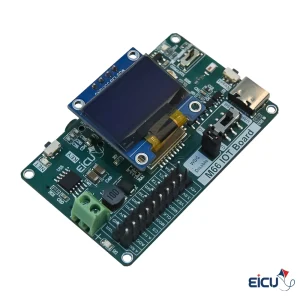 M66 open cpu IOT Development Board
M66 open cpu IOT Development Board 


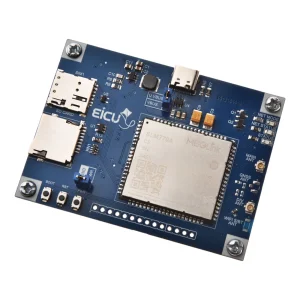
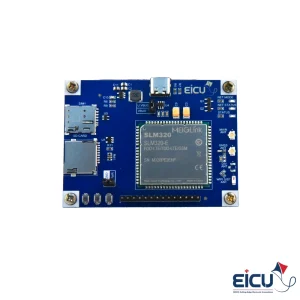
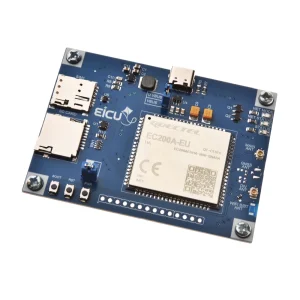
There are no reviews yet.